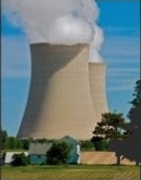竹田昌弘
共同通信編集委員(憲法・司法・事件)
共通点は司法行政担当せず、17日広島高裁決定で7件に
原発など原子炉施設の運転を差し止めた司法判断は、四国電力伊方原発3号機(愛媛県伊方町)を巡る1月17日の広島高裁決定で計7件となった。内訳は訴訟の判決3件(地裁2件、高裁1件)、仮処分の決定4件(地裁、高裁各2件)で、7件のうち5件は2011年の東京電力福島第1原発(福島県大熊町、双葉町)事故以降に相次いでいる。それぞれどのような内容で、どんな裁判長による判断なのか。何か共通点はあるのだろうか。(共同通信編集委員=竹田昌弘)
■行政庁判断に不合理、安全審査に過誤や欠落あれば違法
原子炉施設の地元住民らは1973年以降、地震、火山、津波に対する安全性を欠くなどとして、国の原子炉設置許可取り消しや無効確認を求める行政訴訟のほか、電力会社に運転の差し止めを求める民事訴訟やその民事訴訟の結論が出るまでの一定期間、原発の運転を差し止める仮処分を申し立ててきた。こうした裁判は福島第1原発事故の前に十数件あり、事故後は50件近くに上っている(脱原発弁護団全国連絡会のホームページなどによる)。
一連の裁判では、最高裁が伊方原発1号機原子炉設置許可取り消し訴訟の上告審判決(92年10月)で示した、次のような判断の枠組みが使われてきた。
①裁判所の審理と判断は、原子力委員会や原子炉安全専門審査会(現・原子力規制委員会)の専門技術的な調査審議と判断を基にしてなされた、行政庁の判断に不合理な点があるか否かという観点から行われるべきだ。
②現在(原子炉の設置許可当時ではない)の科学技術水準に照らし、調査審議で用いられた具体的審査基準に不合理な点がある場合、あるいは、原子炉施設が具体的審査基準に適合するとした原子力委員会や原子炉安全専門審査会の調査審議と判断の過程に看過しがたい過誤、欠落があり、行政庁の判断がこれに依拠してなされたと認められる場合には、行政庁の判断に不合理な点があるものとして、この判断に基づく原子炉設置許可は違法と解釈すべきだ。
③行政庁の判断に不合理な点があるとの主張、立証の責任は、本来原告が負うべきだが、原子炉施設の安全審査に関する資料を全て行政庁の側が保持していることなどを考慮すると、行政庁の側でまず判断に不合理な点のないことを相当の根拠、資料に基づき主張、立証する必要がある。行政庁が主張、立証を尽くさない場合には、行政庁の判断に不合理な点があることが事実上推認される。
④原子炉設置許可段階の安全審査では、その安全性にかかわる事項全てを対象とするのではなく、その基本設計の安全性にかかわる事項のみを対象とする。
■設置許可は無効、初めて止めたもんじゅ控訴審
最高裁は伊方1号機の判決で、原子炉等規制法に設置許可の基準が定められている目的は「災害が万が一にも起こらないようにするため」としつつ、①~④の判断の枠組みに基づき、原子力委員会などに専門技術的な裁量を広く認め、行政庁の判断に不合理な点はないと結論付けた。この判断の枠組みは各地の行政訴訟で踏襲されただけでなく、民事訴訟でも②や③が応用して使われ、電力会社の安全対策に看過しがたい過誤、欠落はないなどとして住民側の敗訴が続いたが、2003年1月、核燃料サイクル開発機構(現・日本原子力研究開発機構)の高速増殖原型炉もんじゅ(福井県敦賀市)の周辺住民らが原子炉設置許可の無効確認を求めた行政訴訟で、初めて原子炉施設の運転を止める判決が出た。
もんじゅの訴訟は、2000年3月の一審福井地裁(岩田嘉彦裁判長)が伊方1号機訴訟の最高裁判決と同様、専門技術的な裁量を認め、住民側の請求を棄却したが、名古屋高裁金沢支部の控訴審判決では、川崎和夫裁判長が原子炉の安全審査には②の「看過しがたい過誤、欠落」があり、放射性物質が外部に漏れる具体的危険を否定できないなどとして、設置許可を無効とした。
もんじゅはプルトニウム・ウラン混合酸化物(MOX)燃料を使い、発電しながら消費した以上のプルトニウムを生み出すとされた原子炉。1995年12月、2次冷却系で配管内側の温度計が破損し、冷却材のナトリウム約640キロが漏れて火災が起きた。川崎裁判長が安全審査の「看過しがたい過誤、欠落」と認定したのは、▽漏れた高温のナトリウムがコンクリートの床に置かれた鋼鉄板(床ライナ)を腐食し、ナトリウムとコンクリートが直接接触して大量の水素が発生したり、コンクリートが崩壊したりする可能性、▽蒸気発生器内でナトリウムと水が接触すると、伝熱管が連続して破損するおそれ、▽ナトリウムの沸騰から核反応が制御不能となり、炉心崩壊事故に至る危険性―の三つだった。これらはナトリウム漏れ事故とその後の燃焼実験などで判明した。
川崎裁判長は1946年生まれ。72年に裁判官となり、宇都宮地裁、公害等調整委員会(検事の身分で審査官補佐)、東京地裁、秋田地裁大曲支部(支部長)、東京家裁、同家裁八王子支部(裁判長)、水戸地裁(同)などを経て、2000年から名古屋高裁金沢支部に所属。01年には支部長に昇格し、もんじゅ判決後の03年12月、熊本家裁所長へ転じた。05年3月に依願退官(公人社「全裁判官経歴総覧第五版」による)。
その2カ月後の05年5月、高裁金沢支部判決は最高裁第1小法廷(泉徳治裁判長)で破棄され、住民側敗訴が確定した。最高裁は判断の枠組み④により、安全審査の対象とされた「基本設計の安全性にかかわる事項」とは、原子力安全委員会(現・原子力規制委員会)の科学的、専門技術的知見に基づく意見を十分に尊重して行う、主務大臣の合理的な判断に委ねられていると指摘。高裁金沢支部が「看過しがたい過誤、欠落」と認定した床ライナの問題は基本設計の安全性にかかわらない事項であり、伝熱管破損事故やナトリウムの沸騰を想定した解析内容や結果の審査、評価にも不合理な点はないなどとする国の主張を認め、原子炉設置許可は適法と判断した。
高裁金沢支部はナトリウム漏れ事故で欠陥が判明したことから、事故を起こした原子炉の設置許可はやり直すべきだと判断したのに対し、最高裁は基本設計の安全性にかかわる事項ではないなどとして、もんじゅのプロジェクトを救済した。しかし、もんじゅでは、10年に炉内装置の落下事故が起こり、12年には機器点検漏れも発覚した。1983年に設置が許可され、1兆円を超える国費が投じられてきたが、運転したのは250日にとどまり、政府は16年12月、廃炉を決めた。最高裁の判断次第では、傷がここまで深くなる前に廃炉にできたのではないだろうか。
■耐震性に問題、人格権に基づき志賀2号機差し止め
原子炉施設の運転を止めた2件目は06年3月、北陸電力志賀原発2号機(石川県志賀町)の地元住民らが起こした民事訴訟の判決だった。金沢地裁の井戸謙一裁判長は、まず個人の生命、身体が侵害される具体的危険がある場合、その個人は人格権に基づき侵害行為の差し止めを求めることができると認めた。
その上で、志賀2号機は1981年に原子力安全委員会が決定した耐震設計審査指針(耐震指針)に基づき、安全審査に合格したが、この耐震指針はどちらもマグニチュード(M)7・3の阪神大震災(95年)と鳥取県西部地震(2000年)、M7・2の宮城県沖の地震(05年)など、新たな地震や研究成果を反映しておらず、想定を上回る揺れも観測されているので「妥当性がない」と判断。政府の地震調査研究推進本部地震調査委員会が志賀原発近くの邑知潟(おうちがた)断層ではM7・6の地震が発生する可能性を指摘しているのに、考慮されていないなどとして、地震によって事故が起きる具体的危険を認定した。さらに「想定を超える地震が起きた場合、さまざまな故障が同時に発生する可能性が高く、多重防護が有効に機能するとは思えない。炉心溶融事故の可能性もある」として、運転を差し止めた。
金沢地裁判決では、最高裁が示した判断の枠組み②の「現在の科学技術水準に照らし」を踏まえて安全審査の不合理性を認め、③の安全性に関する資料を持つ側の立証責任も活用し、北陸電力が十分反証できなかったことも重視した。
井戸裁判長は1954年生まれ。79年に任官し、神戸地裁、神戸家裁、甲府地裁、福岡家裁小倉支部、大津地裁彦根支部、大阪高裁、山口地裁宇部支部(支部長)、京都地裁などに勤務。2002年から金沢地裁の裁判長を務め、志賀2号機判決後の06年4月、京都地裁の裁判長に異動した。福島第1原発事故が起きた11年3月、大阪高裁判事を最後に依願退官し、弁護士(滋賀弁護士会所属)となる。どちらも関西電力の高浜原発3、4号機(福井県高浜町)や大飯原発3、4号機(福井県おおい町)などの差し止め訴訟や仮処分の代理人を務めている。19年に発覚した関西電力役員らの金品受領問題では、八木誠前会長らに対する告発の代理人となったほか、滋賀県東近江市の湖東記念病院で03年、人工呼吸器を外して男性患者を殺害したとして殺人罪に問われ、服役後に再審開始が決定した元看護助手の弁護団長でもある(全裁判官経歴総覧第五版と共同通信配信記事による)。
■「同様の司法判断続かず、福島第1原発事故に」
井戸さんは退官直後の共同通信の取材に対し、志賀2号機訴訟の判決について、次のように語っている。
「住民側の利益と公共的な利益の比較が一つのポイントだった。電気は公共の財産。運転差し止めで一企業の経済的利益を超え、地域経済に悪影響を与えるのならば、住民の利益を制限せざるをえない場合もあり得る。一方、原発事故が起きて被ばくするのは、当然住民にとって我慢の限度を超える事態。訴訟では住民側が具体的危険を主張するのに対し、電力会社が十分に反証できなかった。住民の利益は生命、身体なのだから、公共性を考えたとしても、一企業の経済的な利益より優先される。住民への具体的危険は受忍限度を超えると結論付けた」
「社会的反響はもちろん予想していた。長年難航していた耐震指針の見直し作業は判決後加速し、06年秋には、基準を強化した新指針に改定された。判決には、それなりに意味があったのかなとは思っていた。しかし、東日本大震災で福島第1原発事故が起きた。個人的意見だが、津波について警告している学者もいたのに、耐震指針の見直し作業で津波の問題も含めて十分安全側に立った結論にならなかったことが、福島の事故に結び付いたように思える。残念だ」
井戸さんは19年8月のインタビューでは「(金沢地裁の判決と)同様の司法判断は続かず、結果的に東日本大震災前の差し止め判決は1件だった。司法の流れを変えられなかった。原発事故は万が一にも起こしてはならず、どんなに小さな可能性だとしても、対処することが必要だ。東電は福島第1原発の防潮堤かさ上げまでは決断できなかったとしても、原子炉を冷やすための非常用電源をより高い場所に設置するなどの次善の策があったはずだ。結局何もしておらず、安全神話に毒されていたと思う。(弁護士として原発裁判を続けているのは)経験も知識もある者として、果たすべき責任がある。あれだけの事故があったのに原発にしがみつく国の姿勢は変わらない。経済的な合理性から見ても、原発に未来はなく、直ちに脱原発に向かわなければならない。司法への期待を捨てず、やれることをやろうと思う」と話している。
[…]
原子炉施設を止めた、もんじゅ訴訟控訴審の川崎さん、志賀2号機訴訟の井戸さん、大飯3、4号機訴訟の樋口さんの3人には、最高裁事務総局で裁判所の管理・運営など「司法行政」を担当したことがないという共通点がある。井戸さんと樋口さんは東京勤務が一度もなかった。(続く)
全文




